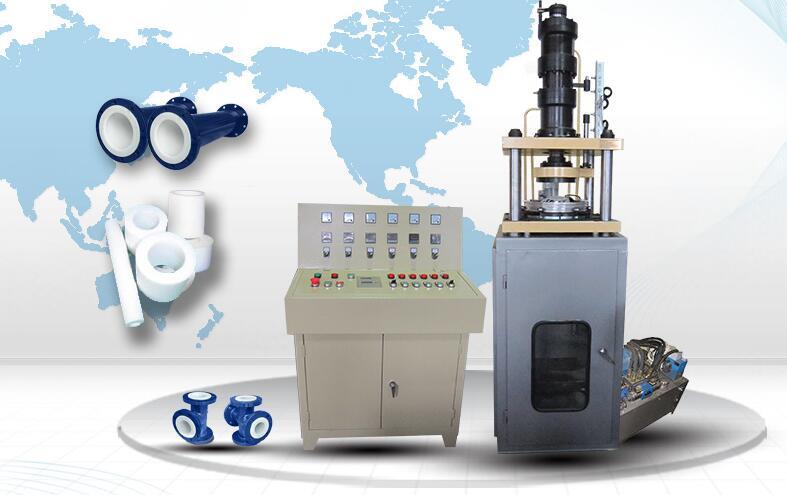Extrusion is a compressive deformation process in which a block of metal is squeezed through an orifice or die opening in order to obtain a reduction in diameter and increase in length of the metal block. The resultant product will have the desired cross-section. Extrusion involves forming of axisymmetric parts. Dies of circular on non-circular cross-section are used for extrusion. Generally, extrusion involves greater forming forces. Large hydrostatic stress in extrusion helps in the process by enhancing the ductility of the material. Metals like aluminium, which are easily workable, can be extruded at room temperature.

Types of extrusion:
Direct extrusion:Direct extrusion, also called forward extrusion, is a process in which is the billet moves along the same direction as the ram and punch do. Sliding of billet is against stationary container wall.Friction between the container and billet is high. As a result, greater forces are required. A dummy block of slightly lower diameter than the billet diameter is used in order to prevent oxidation of the billet in hot extrusion. Hollow sections like tubes can be extruded by direct method, by using hollow billet and a mandrel attached to the dummy block.
Indirect extrusion:Indirect extrusion (backward extrusion) is a process in which punch moves opposite to that of the billet. Here there is no relative motion between container and billet. Hence, there is less friction and hence reduced forces are required for indirect extrusion. For extruding solid pieces, hollow punch is required. In hollow extrusion, the material gets forced through the annular space between the solid punch and the container. The variation of extrusion pressure in indirect extrusion is shown above. As seen, extrusion pressure for indirect extrusion is lower than that for direct extrusion. Many components are manufactured by combining direct and indirect extrusions. Indirect extrusion can not be used for extruding long extrudes.
Hydrostatic extrusion:In hydrostatic extrusion the container is filled with a fluid. Extrusion pressure is transmitted through the fluid to the billet. Friction is eliminated in this process because of there is no contact between billet and container wall. Brittle materials can be extruded by this process. Highly brittle materials can be extruded into a pressure chamber. Greater reductions are possible by this method. Pressure involved in the process may be as high as 1700 MPa. Pressure is limited by the strength of the container, punch and die materials. Vegetable oils such as castor oil are used. Normally this process is carried out at room temperature. A couple of disadvantages of the process are: leakage of pressurized oil and uncontrolled speed of extrusion at exit, due to release of stored energy by the oil. This may result in shock in the machinery. This problem is overcome by making the punch come into contact with the billet and reducing the quantity of oil through less clearance between billet and container.
Impact extrusion: Hollow sections such as cups, toothpaste containers are made by impact extrusion. It is a variation of indirect extrusion. The punch is made to strike the slug at high speed by impact load. Tubes of small wall thickness can be produced. Usually metals like copper, aluminium, lead are impact extruded.
Tube extrusion:Employing hollow billet and a mandrel at the end of the ram, hollow sections such as tubes can be extruded to closer tolerences. The mandrel extends upto the entrance of the die. Clearance between the mandrel and die wall decides the wall thickness of the tube. The mandrel is made to travel alongwith the ram in order to make concentric tubes by extrusion.
Cold and hot extrusion:
Cold extrusion could produce parts with good surface finish, high strength due to strain hardening, improved accuracy, high rate of production. However, the process requires higher pressure and tools are subjected to higher stresses. Proper lubrication is necessary for preventing seizure of tool and workpiece. Phosphate coated billets are lubricated with soap.
Hot extrusion can be employed for higher extrusion ratios. Inhomogeneous deformation can occur due to die wall chilling of the billet. Metal may get oxidized. The oxide layer can increase friction as well as the material flow. Glass is used as lubricant for hot extrusion. Molybdenum disulfide or graphite are the solid lubricants used in hot extrusion. Canned extrusion using thin walled cans made of copper or tin is usually used for extruding highly reactive metals and metal powders.
Extrusion presses:
Hydraulic presses of vertical or horizontal type are used for extrusion. Vertical presses are of capacity ranging from 3 to 20 MN. Horizontal presses occupy less space, but the billets get nonuniformly cooled. Horizontal presses upto 50 MN capacity are being used. Tubular extrusions are mostly done in vertical presses, while horizontal presses are used for bar extrusion.
Post time: Apr-03-2017

